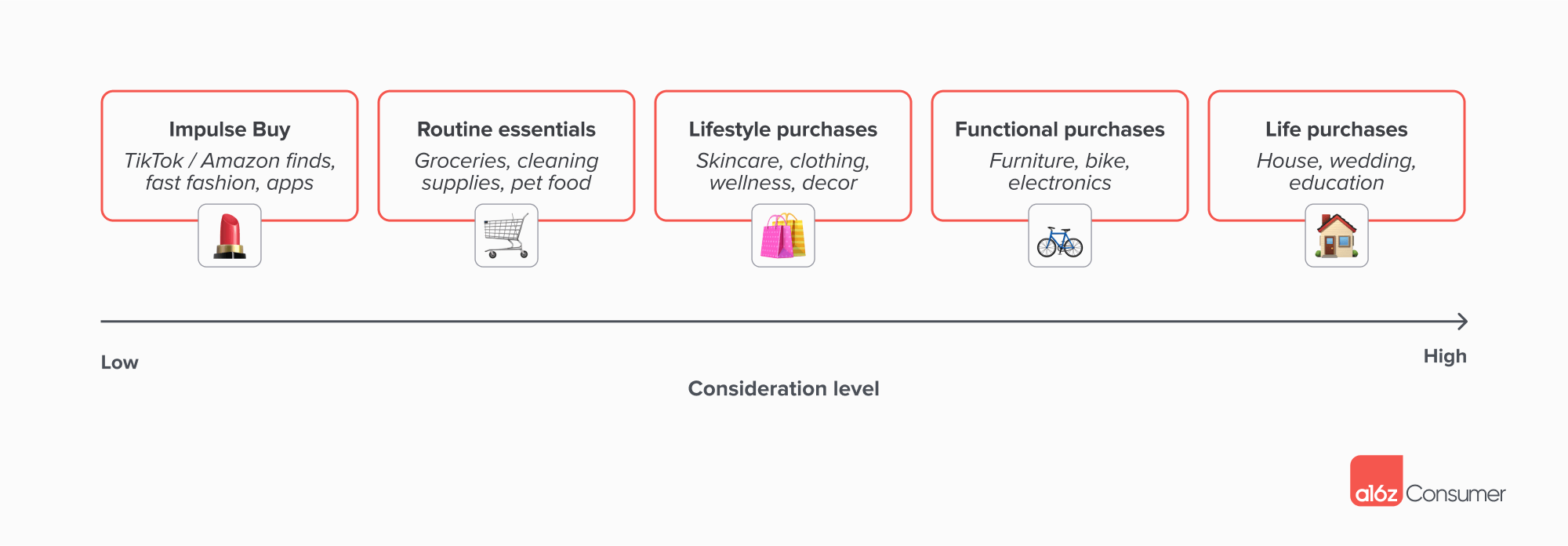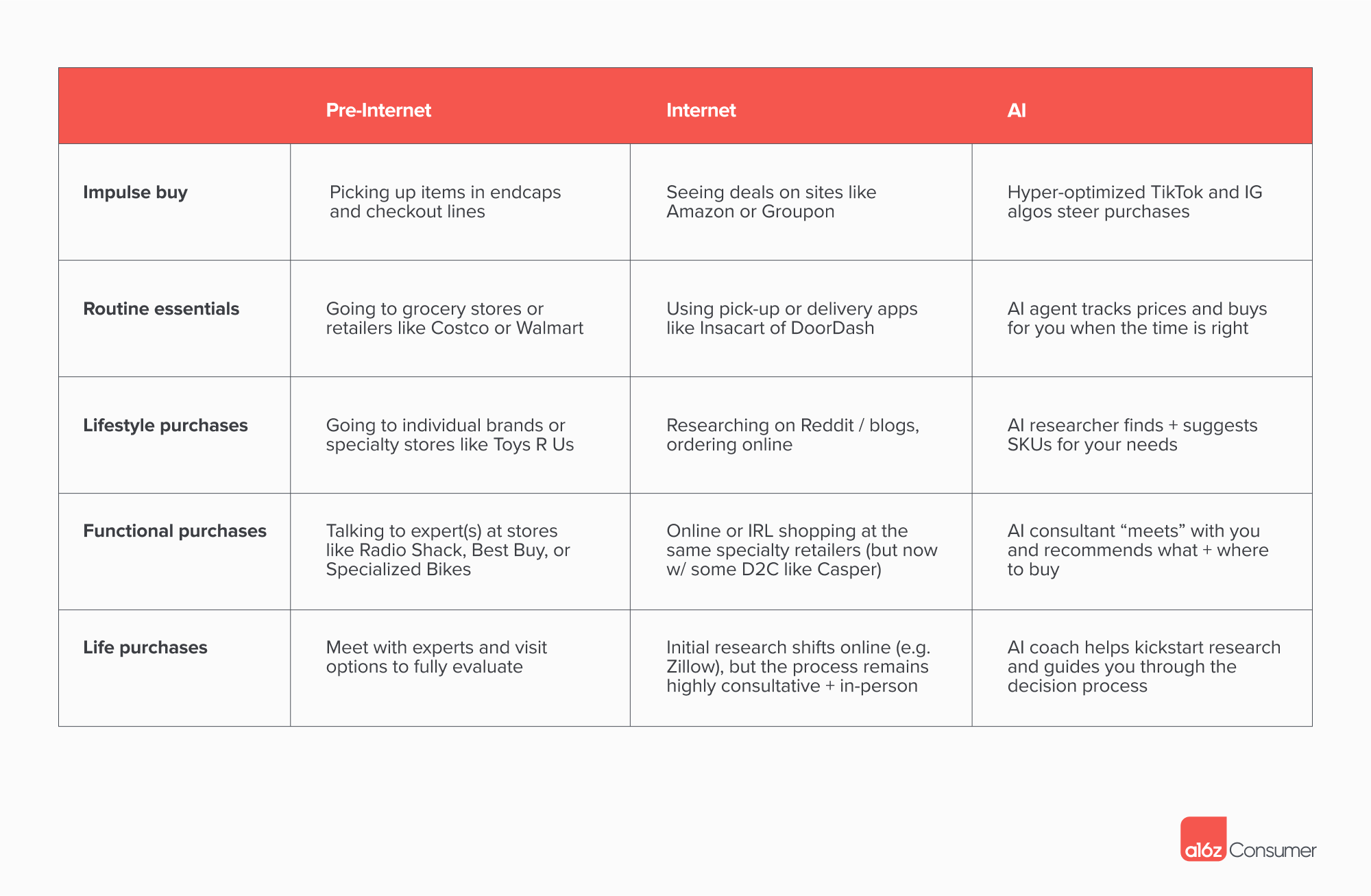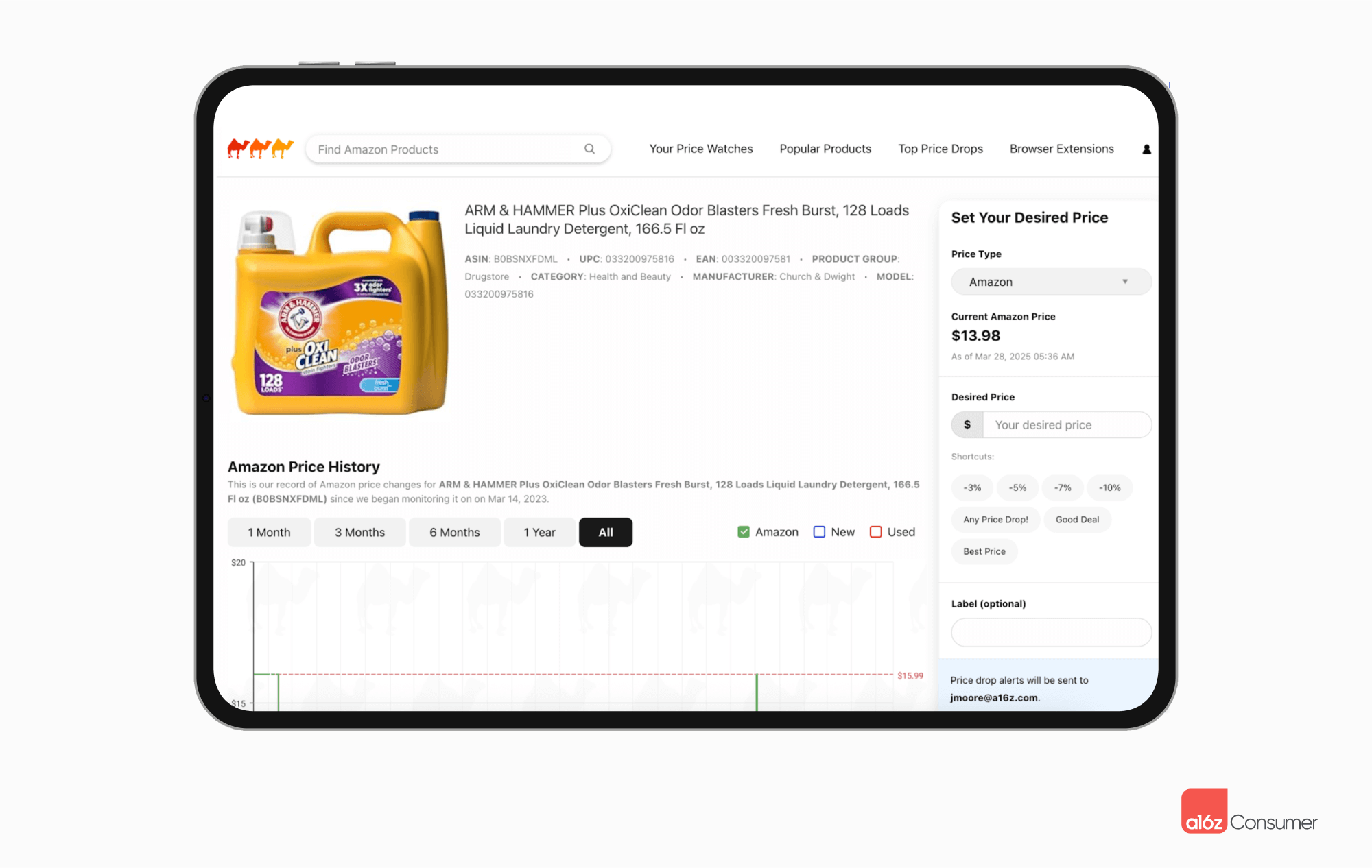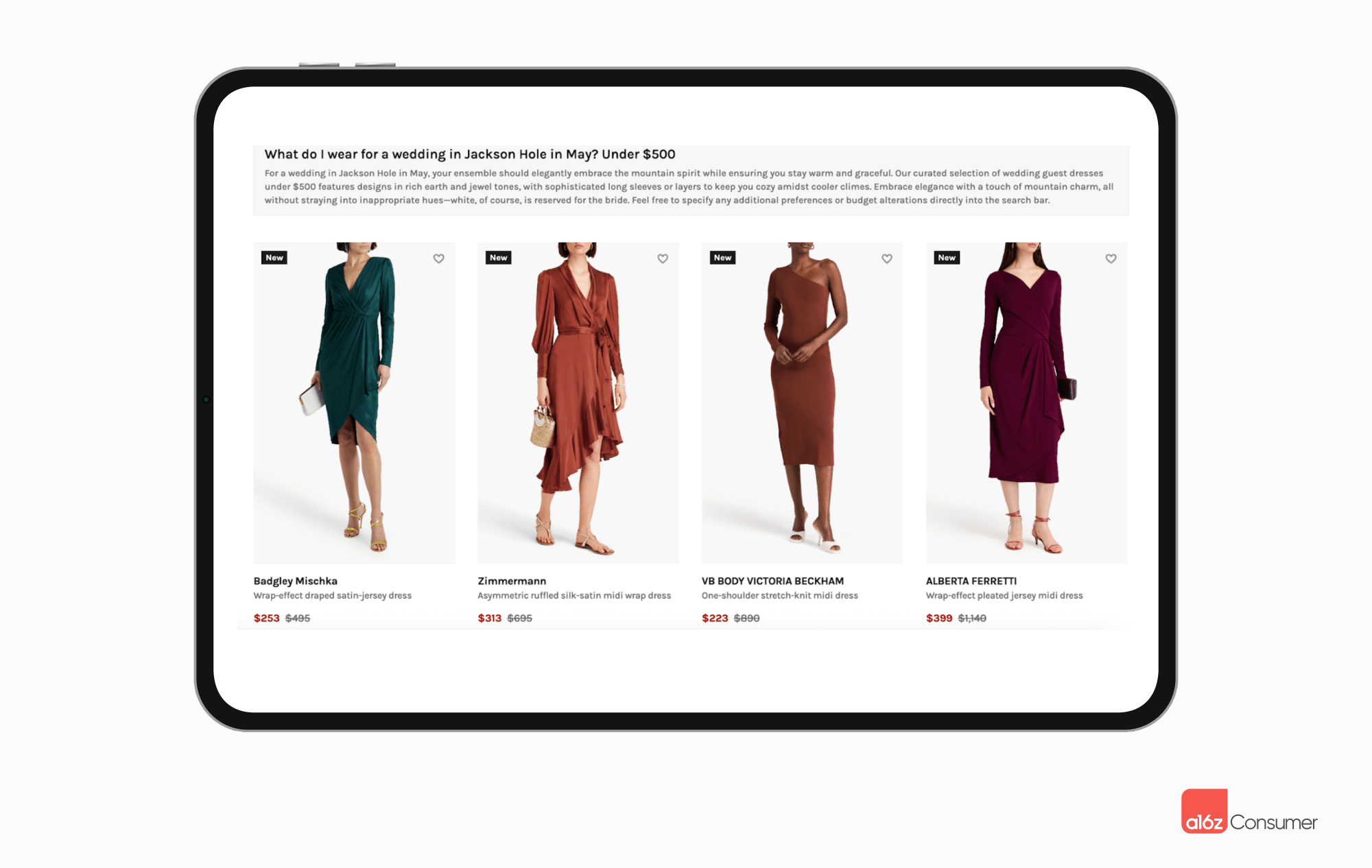Is Google Screwed? Maybe. But Not How You Think.
The internet’s most profitable business model has always been simple: running search ads on monetizable queries. When you search “how many protons are in a cesium atom,” Google makes no money. When you search “best tennis racket,” it prints cash.
This asymmetry defines the entire search economy–some queries are pure curiosity, and others have direct purchase intent. It’s part of why Google (where people often search for products) is a $2T company and Wikipedia (where people search for knowledge or fun facts) is a non-profit.
Google could lose 95% of search volume and still grow revenue –as long as it retains the valuable queries, which are largely commerce related. Has Google managed to keep these searches from moving to AI platforms like ChatGPT and Perplexity?
Maybe. In May 2025, Apple SVP Eddy Cue testified during the DOJ’s antitrust trial that Safari search volume had declined for the first time in over two decades. The result? Alphabet’s stock dropped nearly 8% in a day, wiping out over $150 billion in market cap — all from the hint that queries might be leaking to AI. But fast forward to Google’s increasing revenue (including from search!) and it’s pretty clear (squaring Eddy Cue’s comments with Google’s Q2 earnings) that Google is likely only losing low-monetizing queries, at least for now.
AI is eating the low-value (at least in “cost-per-click terms”) queries first, the ones with no commercial intent that are more informational. If language models answer your cesium question, Google loses the query but not a dime. The revenue remains until AI starts replacing things like “best X for Y” commerce journeys — the ones with actual purchase intent. There’s no question this is about to happen, but not all commerce is the same. Some commerce will be eaten by AI, some will be immune to it, and some will be up for grabs by new startups.
Defining “Commerce” and its AI Opportunities
We can split purchases into five rough categories, ordered by level of consideration:
- Impulse buy – think the chocolate bar in the checkout line of the grocery store or a funny t-shirt you see on TikTok Shop. You don’t know you need these items in advance and don’t do any research.
- Routine essentials – think groceries, dog food, cleaning supplies, diapers. You might do a bit of research the first time you buy something, but it’s more likely you grab what’s convenient + reasonable.
- Lifestyle purchases – think nice skincare, a fancy bag, or home decor. These things that you don’t need, but you want. You’ll likely do some research before buying, but it will likely be searching online and reading reviews.
- Functional purchases – think a commuting or mountain bike, furniture, or a new laptop or phone. These items are expensive for most consumers and involve a fair bit of research – often visiting one (or multiple) stores and consulting with experts.
- Life purchases – think a house, wedding, or college degree. These are highly considered purchases that typically involve months of research and seriously evaluating several possible options.
There’s a sixth category here that we won’t cover in detail in this post, because the purchase behavior is idiosyncratic. This is aspirational purchases – things you dream about buying once you get that promotion, or that you spend months (or years) saving up for. Depending on your income level, these purchases could be many things: a luxury handbag, a sports car, a vacation home. Each of these journeys is likely different. But it’s possible that AI agents help a consumer pick the exact SKU they want to buy or track prices / availability.
How will AI play a role?
We expect that AI will impact each type of purchase – but in vastly different ways. To start, we’ll dive into how shopping behaviors were impacted by the Internet and then speculate on what they might look like in the age of AI.
A bit more detail on how AI could impact each category, and early examples of products we’ve seen here:
1. Impulse buys – the nature of an impulse buy means that you won’t be doing research in advance or consulting with an expert, so there’s limited opportunity for AI agents to play a role. However, the algorithms that guide your attention will continue to improve, enabling advertisers to target you with the right product at the right time.
And it will be easier for brands to create hyper-personalized marketing materials that draw you in. For example, imagine watching an IG Reel about Mothers’ Day gifts and then immediately getting an ad for a candle engraved with her name. This type of image customization is now simple (and relatively cheap) to do at scale.
2. Routine essentials – you probably already have brands and SKUs that you know and love when it comes to everyday essentials, so an AI research agent won’t be particularly helpful unless you’re adding a new product to the lineup (like if you get a dog and need to pick their food).
But AI should play a role when it comes to sourcing and purchasing items. For example, if you regularly get the same laundry detergent, your AI agent could monitor and buy on your behalf if the price dips below a certain level (especially if it knows that based on your past purchase patterns, you’ll need new detergent in the next few weeks). Tools like camelcamelcamel allow you to set price watches on Amazon products and notify you if there’s a great deal. The next step of this could be agentic purchasing on your behalf, particularly across retailers.
3. Lifestyle purchases – when you’re purchasing items that you don’t buy regularly (especially if they’re a bit more spendy, like a luxury handbag), you’re likely going to want to evaluate various options to make sure you’re picking the best one. But researching and aggregating the choices, and ranking them across various criteria, is time-consuming.
Imagine deputizing an AI agent to do the grunt work for you and come back with a recommendation that explains why a specific SKU is the perfect choice for you based on your past purchases, what it knows about your preferences, and even things like your body type and what colors look best with your eyes. We’re starting to see early examples of this with products like Plush, which enables you to search for women’s fashion items, but we expect to see tools here that do deeper research across more options.
4. Functional purchases – these items are important because they are typically (1) a meaningful financial investment, and (2) a product you’ll use every day, likely over several years. This means that you want to feel very confident that the product meets your needs and will hold up over time.
You may feel comfortable purchasing a product that your AI research agent recommends. But you’ll likely want to have a more in-depth conversation with a subject-matter expert (an AI “consultant”) about different options, with a phone or video call that allows you to explain your needs in further detail and answer follow-up questions.
Some retailers / brands offer this on their website already, but it’s limited to their SKUs. We see an opportunity for AI consultants that have deep knowledge on a product category across different brands, and that learn more context on each user and their preferences over time (for example, if it helps you buy a sofa, it can later tailor chair recommendations to things that match).
5. Life purchases – there are only a few “life purchases” you’ll make (e.g. a home, car, wedding, or college education). These are expensive and meaningful, so you’ll likely spend months – if not years – evaluating options. You’ll do your own research online, but there’s a decent chance that you’ll also speak with experts and try out the options (e.g. touring wedding venues or homes, test driving a car, visiting a college).
It’s hard to imagine people fully outsourcing these decisions to AI. But it’s likely that an AI coach will guide you through the process of choosing – from researching the initial set of options to evaluating the pros & cons to negotiating terms or reviewing contracts (we already see founders sending us term sheets marked up by Claude).
You may have noticed a few categories of spend that we largely aren’t included in our examples here: food, travel, and healthcare. Food and travel vary by person, so it’s hard to bucket them into one category. For one person, a nice meal at a restaurant or a weekend trip is a routine purchase that doesn’t require meaningful research. For another, it’s a splurge (and an opportunity for an AI research agent to play a role).
Due to the fact that most healthcare expenses are largely out of a person’s control, it’s a bit more complicated to categorize them. We’ll leave this to another post, but suffice it to say that there’s no shortage of opportunities to direct patients to better treatments / doctors / procedures with AI.
Why Amazon (and Shopify) Are Well Situated
Google isn’t the only major commerce platform that could be disrupted by AI. Amazon and Shopify are also at risk – but they sit much closer to the point of purchase than Google. They monetize not just intent but action, and increasingly, repeat behavior.
Amazon owns search, delivery, reorder data, and (quite importantly) reviews. It is an integrated commerce stack. While search can effectively disintermediate Amazon, Amazon itself serves as a search engine for commerce with an embedded loyalty program (Amazon Prime) boasting hundreds of millions of subscribers.
Shopify powers the merchant side: hosting SKUs, facilitating checkout, and enabling direct-to-consumer brands. Through Shop Pay and the Shop App, it’s now building a consumer-side wedge too.
As agents become the new interface for buying, both platforms are well-positioned — Amazon with end-to-end control, Shopify perhaps more so with distributed ownership across millions of stores and growing consumer touchpoints. It doesn’t matter if a consumer search starts with Google or ChatGPT if the destination merchant is hosted by Shopify.
Google could, of course, use its considerable distribution and technical prowess (not to mention “payment credential” prowess with GooglePay) to play offense, purposefully routing more commerce searches in an AI first way, or even making a “CamelCamelCamel x AI” new purchasing app.
What Else Needs to Happen
AI agents can’t fulfill their potential in commerce without major shifts in the substrate they operate on. In particular:
1. Better data: AI’s potential is first and foremost bottlenecked by content, not compute. Most product reviews are noisy, gamed, or overly polarized. Agents need access to structured, trustworthy, real-time feedback. Let’s say you’re looking for the “best” blender. In a perfect world, your AI would order every blender, test them all for a week in your kitchen (with your home robot!), decide which one you like best, and then send the rest back. But today AI just summarizes the web, and cannot turn shilled junk into honest analysis.
2. Unified APIs: To move from recommendations to transactions, agents must be able to interface cleanly across retail platforms. This starts with agents being able to pull accurate data on products (like the most up-to-date price and what’s in stock), and extends to being able to add things to cart and eventually checking out on the user’s behalf.
3. Identity and memory: Agents that understand your preferences, past purchases, and deal thresholds (a la CamelCamelCamel) can automate routine buying and curate lifestyle decisions. This is an interesting challenge, because preferences change over time and also vary by type of purchase – for example, you might like to splurge on flights but want to buy lower-price daily essentials. Or you might frequently return cotton sweaters but never their wool counterparts. So this memory must be dynamic and multi-faceted.
4. Embedded capture: The best AI-native experiences will capture data directly in the user journey that contributes to better recommendations. Imagine an AI agent that infers information about what to recommend to you (or others) from data that’s not typically present on product description pages or reviews. This could be direct (e.g. next time you open the app, it asks you a few specific questions about your last purchase), or more passive (e.g. it looks at how long you linger on a specific item or feature and maybe even asks follow-ups if you’re hesitating).
Until these foundations are in place, LLMs will remain clever summarizers — not true commercial agents. But this is happening fast, and look for the “middle three” areas of commerce to start being eaten by AI – quickly.







